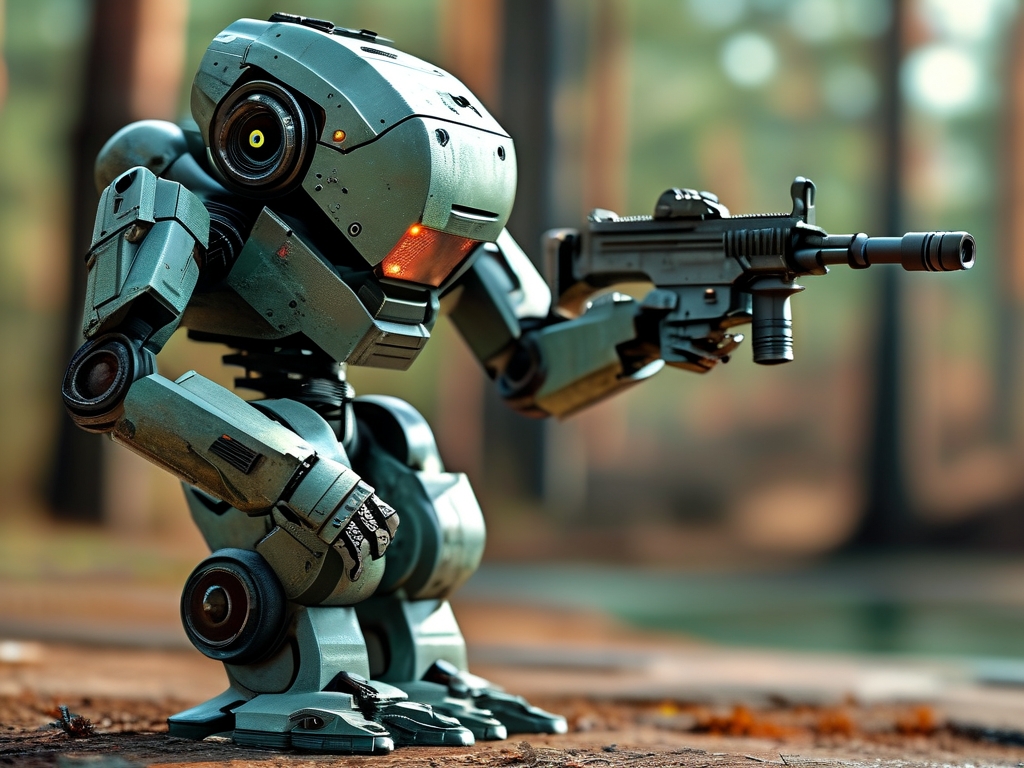The rapid evolution of war robot technology has transformed modern warfare, raising critical questions about control mechanisms, ethical implications, and operational effectiveness. As nations and militaries integrate autonomous and semi-autonomous systems into their arsenals, understanding how to safely and efficiently control these machines becomes paramount. This article explores the technical, strategic, and ethical dimensions of manipulating war robots, offering insights into current practices and future challenges.
1. The Technical Foundations of War Robot Control
War robots rely on advanced technologies such as artificial intelligence (AI), machine learning, and real-time data processing. Operators typically use a combination of remote control interfaces, pre-programmed algorithms, and autonomous decision-making frameworks. Key systems include:
- Sensor Integration: Cameras, LiDAR, and thermal imaging enable robots to perceive environments.
- Communication Networks: Secure, low-latency channels (e.g., 5G or satellite links) ensure real-time control.
- AI-Driven Autonomy: Algorithms allow robots to adapt to dynamic scenarios, such as evading obstacles or identifying targets.
However, technical vulnerabilities persist. Cybersecurity threats, signal jamming, and sensor spoofing can compromise control. Militaries invest heavily in encryption and redundancy systems to mitigate these risks.

2. Human-Machine Collaboration in Combat
Effective control of war robots hinges on seamless human-machine collaboration. Operators undergo rigorous training to manage complex interfaces and interpret AI-generated data. Two models dominate:
- Direct Control: Humans make real-time decisions via joysticks or VR-like systems. This approach prioritizes precision but depends on uninterrupted communication.
- Supervised Autonomy: Robots execute pre-approved missions independently, with humans intervening only for high-stakes decisions. This balances efficiency and oversight.
The U.S. Army’s “Loyal Wingman” drone program exemplifies supervised autonomy, where AI-powered drones support manned aircraft while adhering to human-defined rules of engagement.
3. Ethical and Legal Challenges
The delegation of lethal authority to machines sparks intense debate. Key concerns include:
- Accountability: Who is responsible if an autonomous robot violates international law?
- Bias in AI: Machine learning models trained on flawed data may misidentify targets, risking civilian casualties.
- Escalation Risks: Autonomous systems could accelerate conflict dynamics, reducing time for diplomatic solutions.
Organizations like the United Nations advocate for frameworks such as the Convention on Certain Conventional Weapons (CCW) to regulate lethal autonomous weapons. However, enforcement remains fragmented.
4. Strategic Advantages and Limitations
War robots offer unmatched advantages in reconnaissance, logistics, and high-risk combat zones. For example, unmanned ground vehicles (UGVs) like Russia’s Uran-9 clear minefields without endangering soldiers. Meanwhile, AI-enabled swarming drones can overwhelm enemy defenses through coordinated attacks.
Yet, limitations persist:
- Dependence on Infrastructure: Jamming communication networks can cripple robot fleets.
- Ethical Backlash: Public opposition to “killer robots” may restrict deployment.
- Cost: Developing and maintaining advanced systems strains budgets.
5. The Future of War Robot Control
Emerging technologies will redefine control paradigms:

- Quantum Computing: Enhances encryption and data processing for secure, real-time decision-making.
- Brain-Machine Interfaces (BMIs): Direct neural control could reduce latency and improve responsiveness.
- Explainable AI (XAI): Transparent algorithms help operators trust and verify autonomous decisions.
However, policymakers must balance innovation with accountability. Global cooperation is essential to establish norms preventing misuse.
Controlling war robot technology demands a multidisciplinary approach—merging engineering prowess, ethical foresight, and strategic pragmatism. While these systems promise to reduce human casualties and enhance operational efficiency, their deployment must be guided by rigorous safeguards and international consensus. As the line between human and machine agency blurs, humanity’s ability to govern its creations will determine whether this technology becomes a force for stability or chaos.


